The DriveWell® Platform
The most advanced telematics platform
DriveWell gathers sensor data from millions of IoT devices — including smartphones, proprietary Tags, connected vehicles, dashcams, and third-party devices — and fuses them with contextual data to create a unified view of vehicle and driver behavior.



Our platform runs on hundreds of different phones, using sensors to detect driving behavior. Pair your telematics app with our peel-and-stick Tag for an extra layer of ground truth, providing the most accurate telematics data available.
Learn more about DriveWell Tag
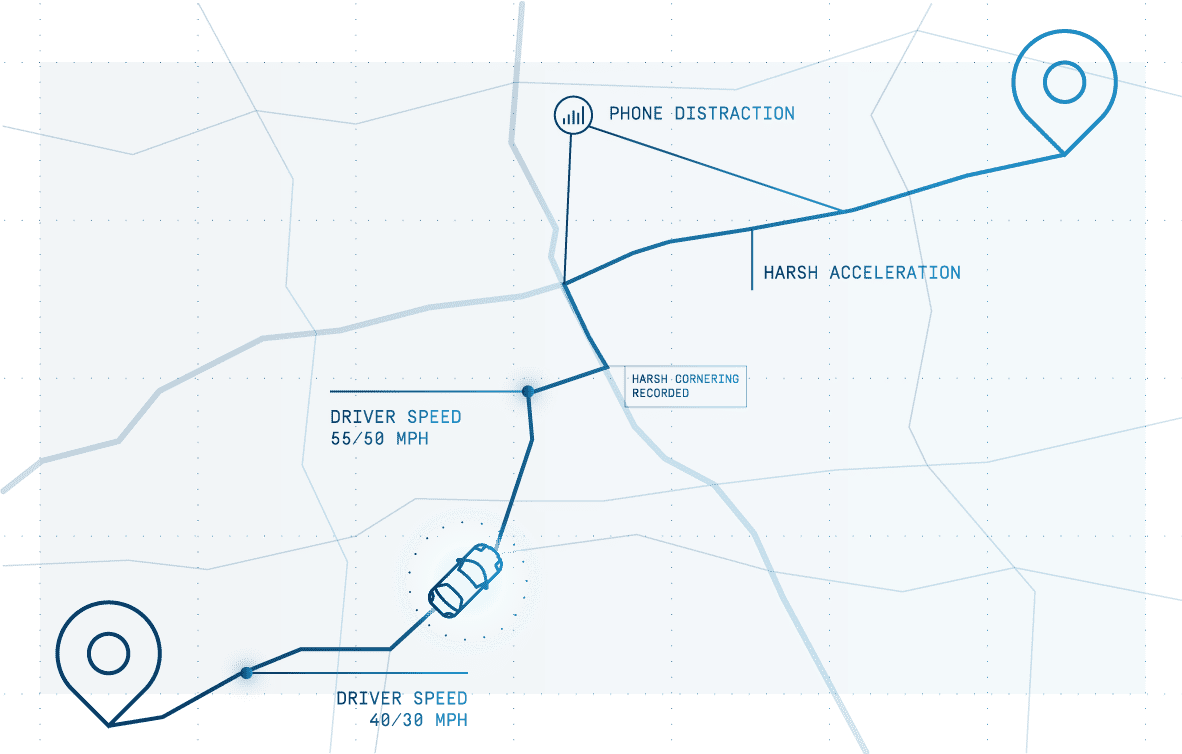
Our high-frequency sensors can identify phone distraction, classify drivers and passengers, recognize speeding and hard braking, all without complicated installation. Our data and telematics platform provides the best method to predict who is at risk of crashes and costly claims.

We design our mobile apps to be easy to use and engaging. Drivers receive timely feedback on their driving and show significant improvement in just 30 days.
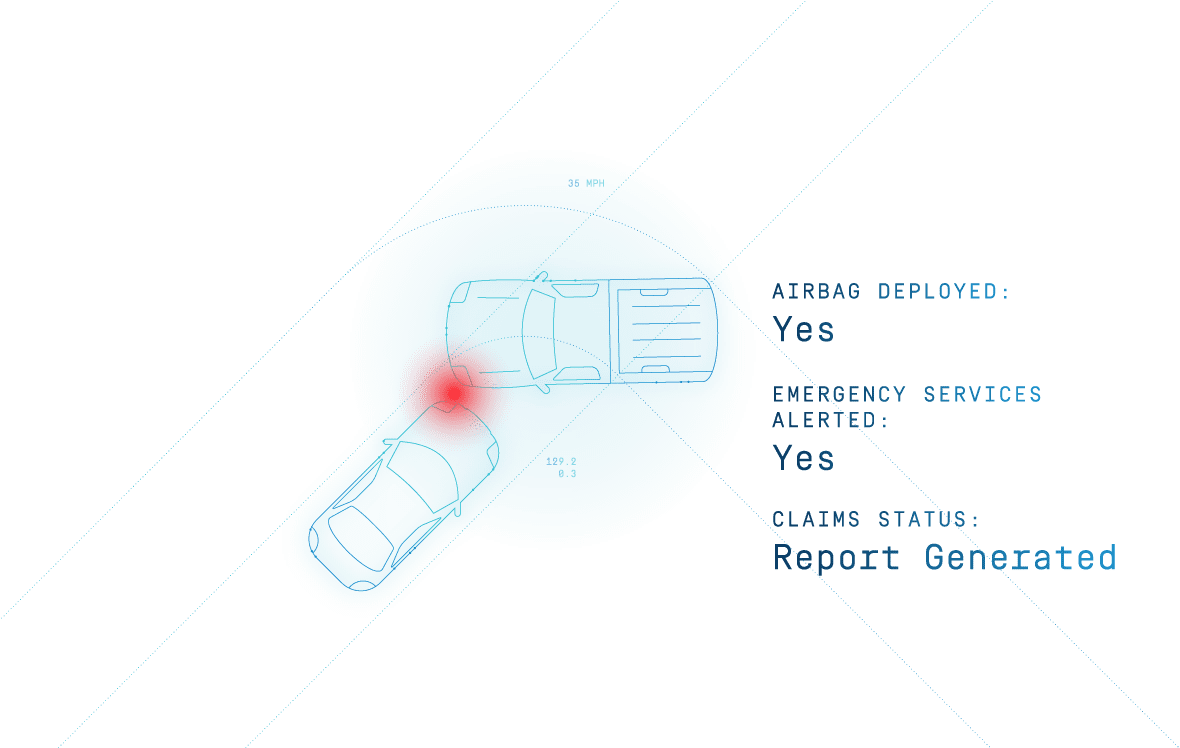
When accidents happen, our AI-driven telematics platform enables our partners to gather information quickly and accurately to proactively respond. Crash detection allows emergency services to respond to the exact location within seconds of a crash. Crash reconstruction provides claims adjusters with a detailed, data-driven account of a crash within 10 minutes.

We protect data with top-of-the-line security protocols and procedures. So our customers know it’s safe and secure. Our products stand on their own — we do not sell our partners’ data to third parties.
Our Granted Patents
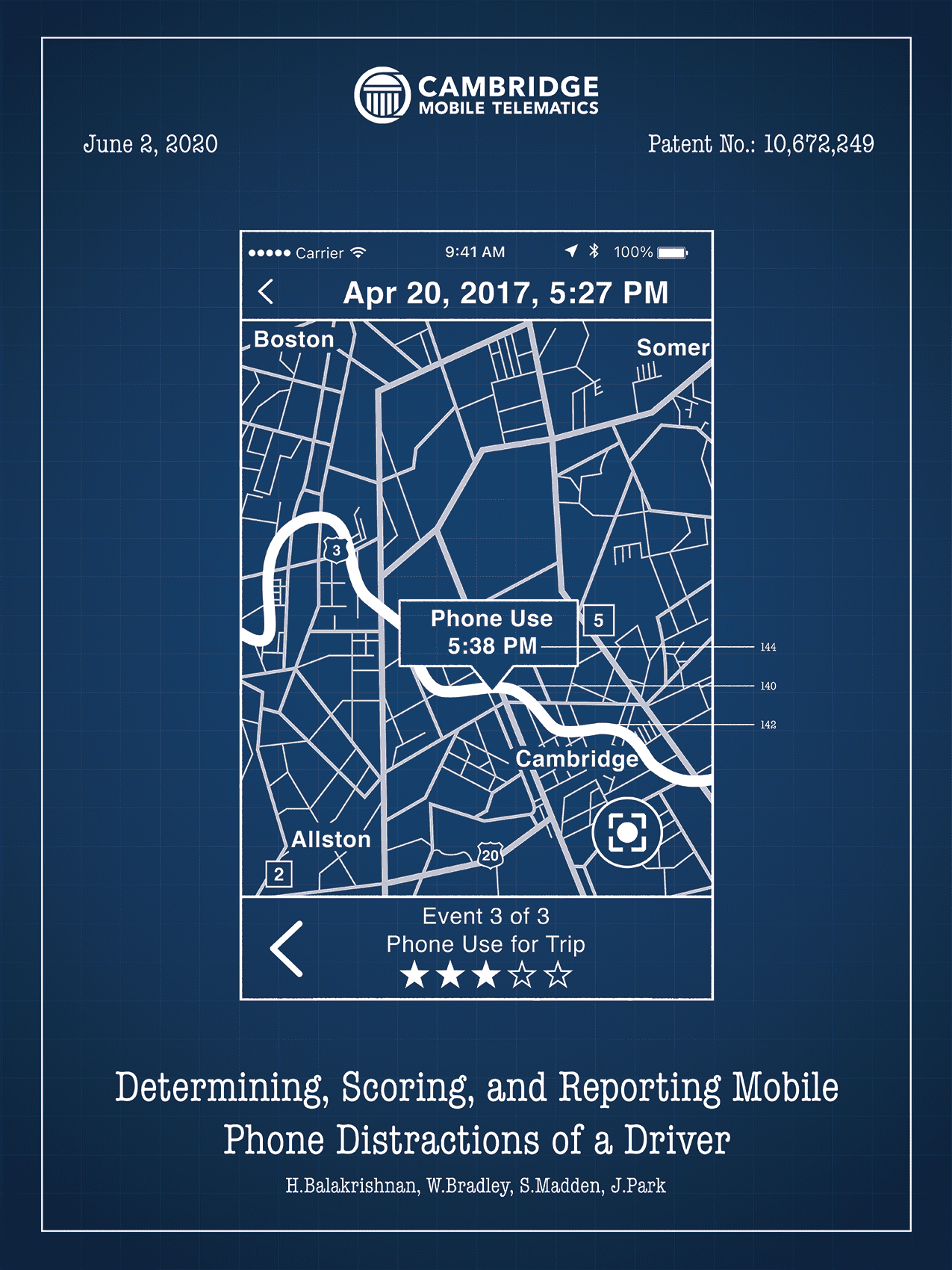
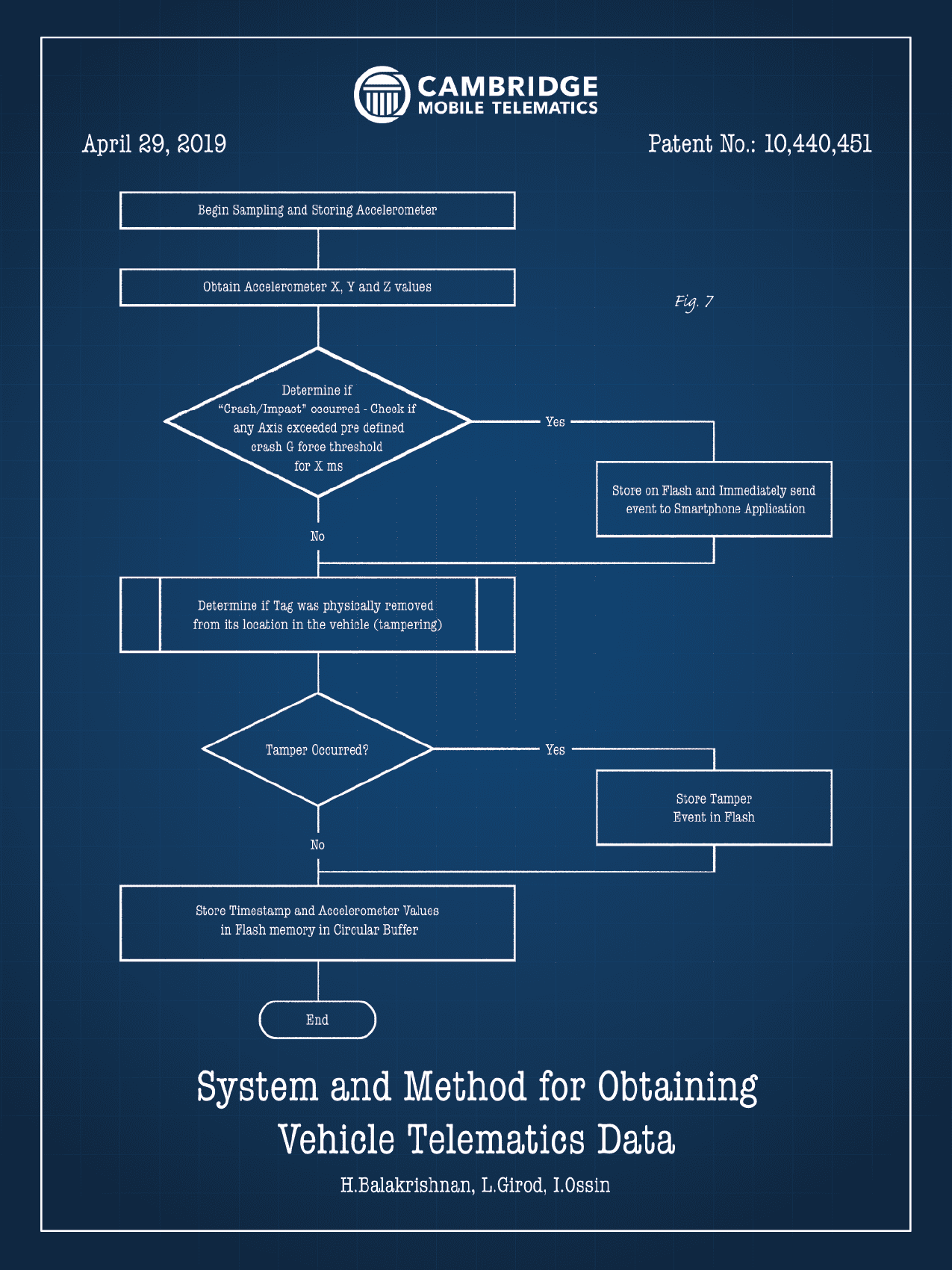
System and Method for Obtaining Vehicle Telematics Data (Patent No.: US 10,440,451)
Cambridge Mobile Telematics uses a sensor tag affixed to a vehicle to obtain vehicle telematics data. A memory in the sensor tag is used for storing a unique tag identifier and trip data including information about trips and acceleration data. The sensor tag communicates with a mobile communications device located in the vehicle that obtains GPS data, combines it with the acceleration data, and transmits it to a server for analysis.
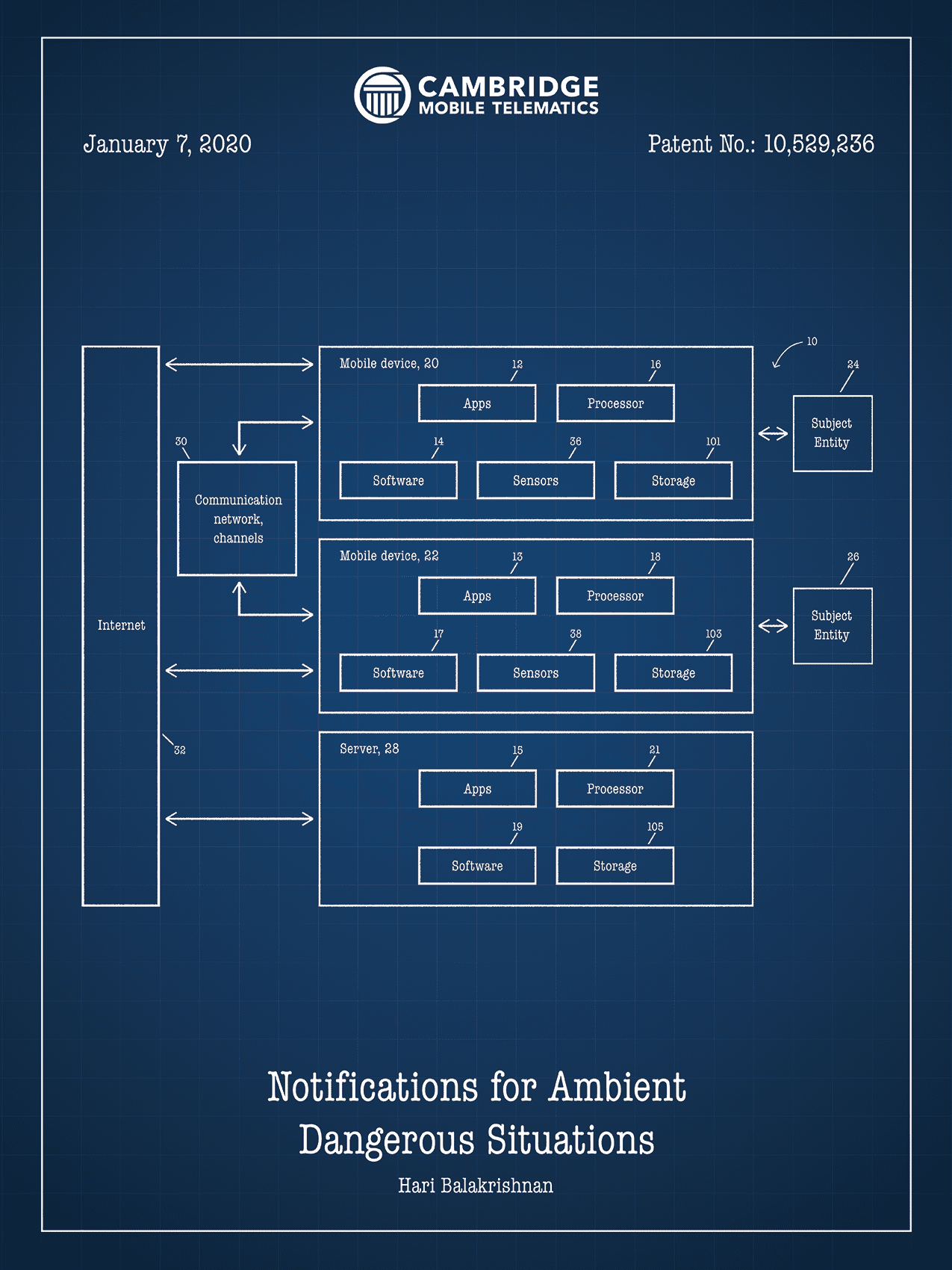
Notifications for Ambient Dangerous Situations (Patent No.: US 10,529,236)
Cambridge Mobile Telematics provides notifications of dangerous situations using information received at or from a mobile device. The information is derived from one or more position or motion sensors of the mobile device, and is used to identify a dangerous situation involving the vehicle and a person on foot or a bicyclist.
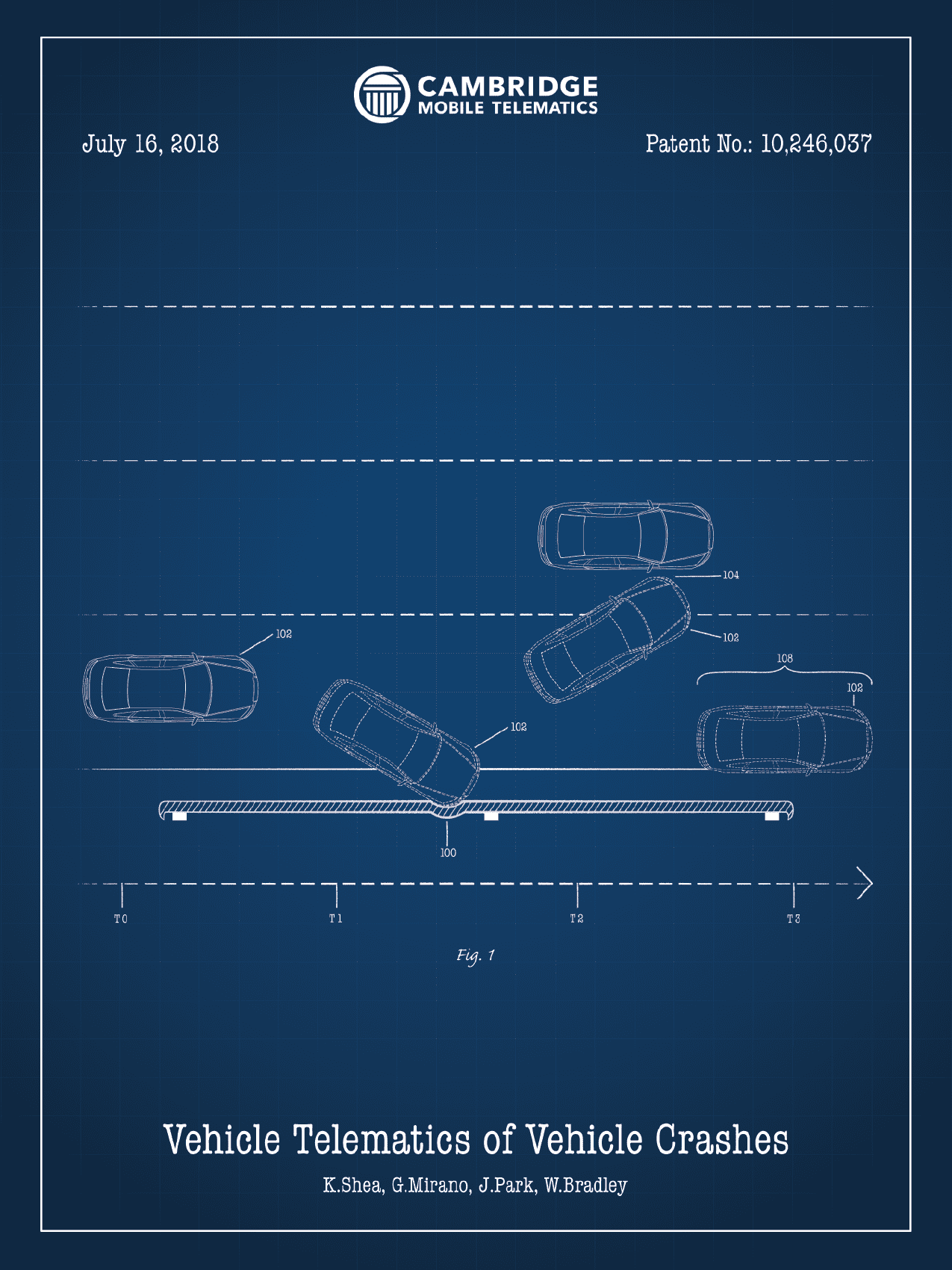
Vehicle Telematics of Vehicle Crashes (Patent No.: US 10,246,037)
Cambridge Mobile Telematics automatically documents a vehicle crash using telematics data. Based on data from one or more sensors associated with a telematics device, a vehicle crash period and metrics associated with the vehicle during the crash period are determined. Based on one or more metrics, a human-readable documentation of the vehicle crash is generated automatically.
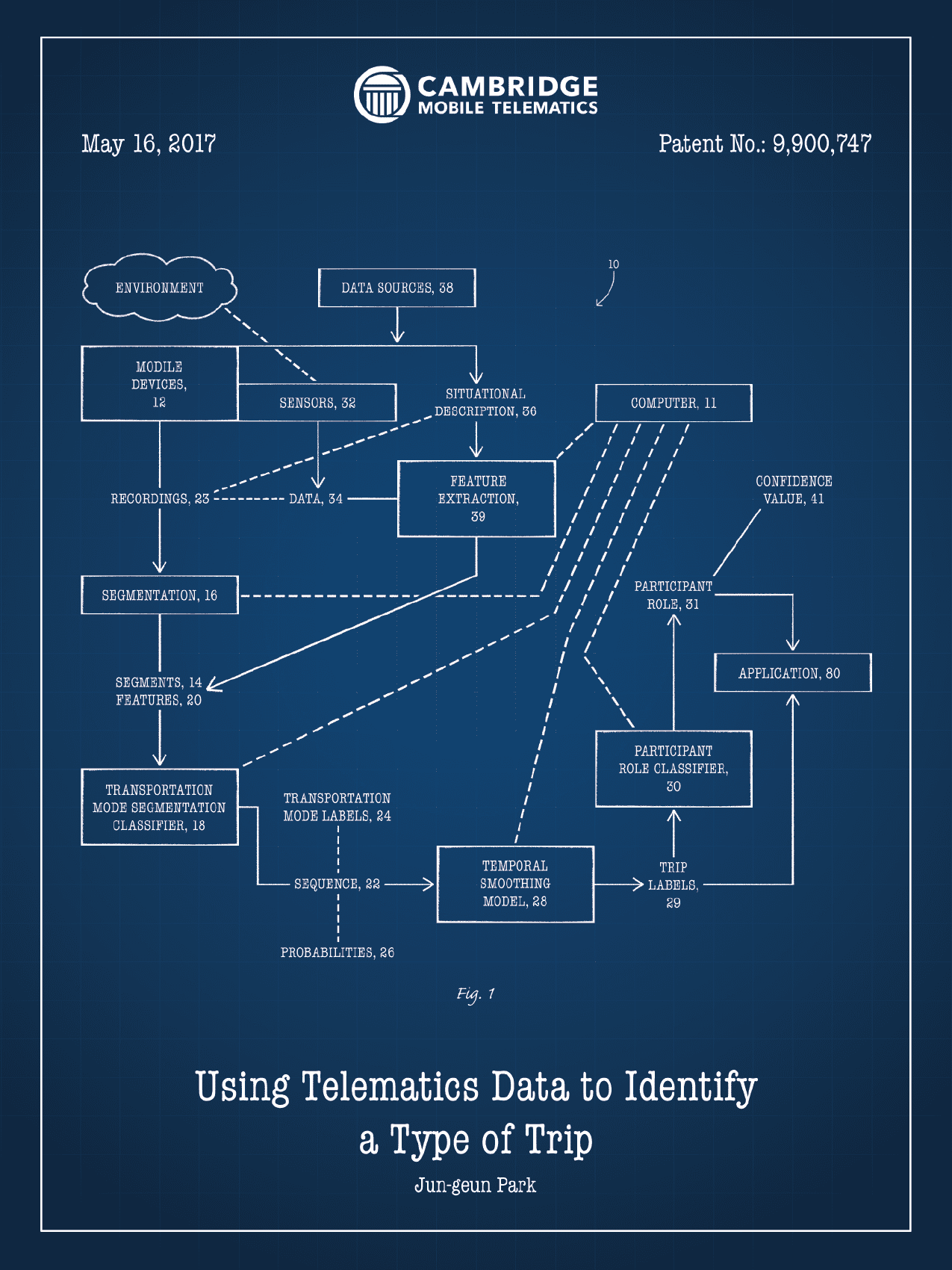
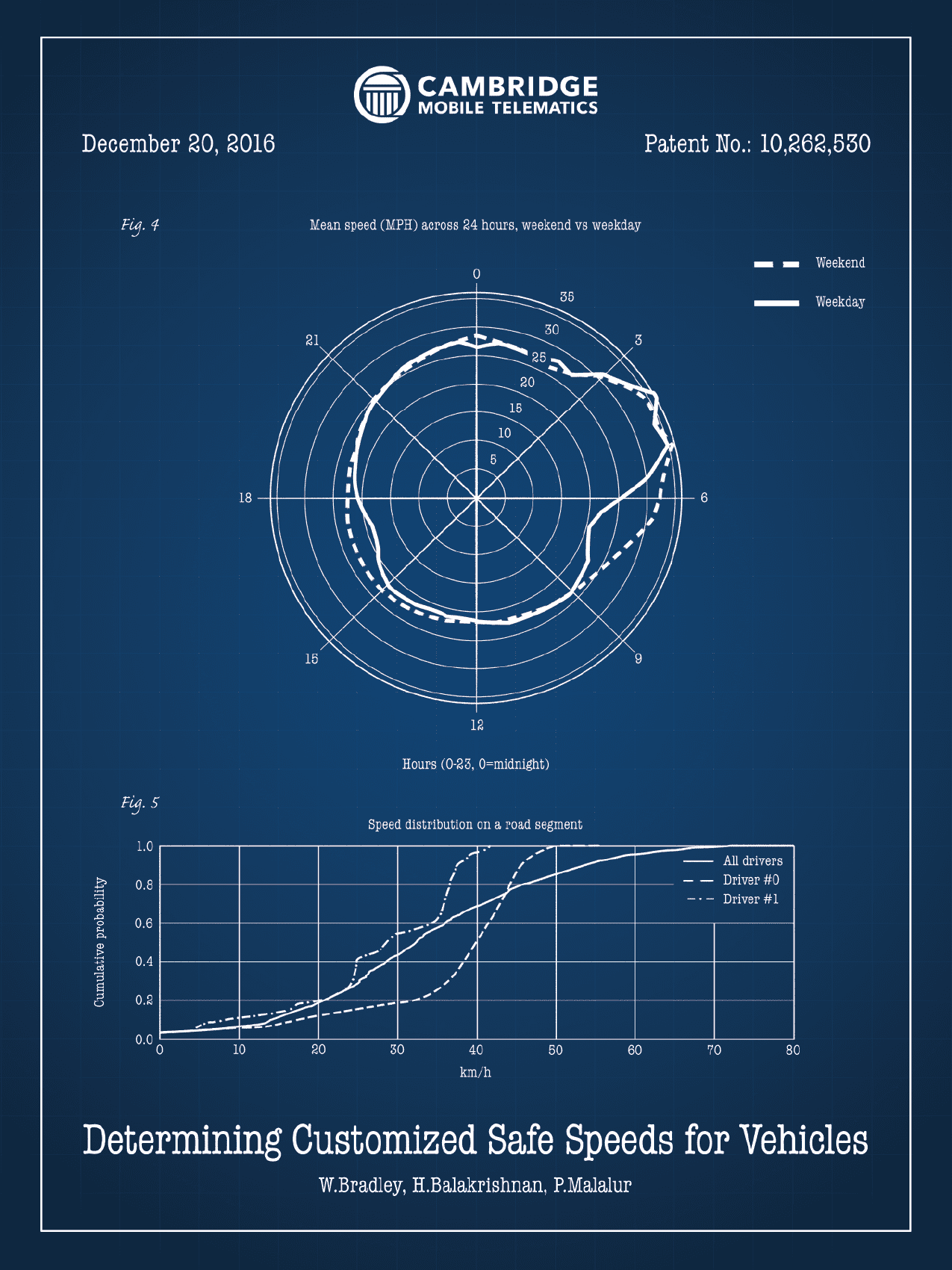
Determining Customized Safe Speeds for Vehicles (Patent No.: US 10,262,530)
Cambridge Mobile Telematics determines customized safe speeds using information from multiple trips and drivers across many road segments. Information from a new trip can be compared with relevant data from previous trips, yielding a score representing the safety of the driver’s speed.
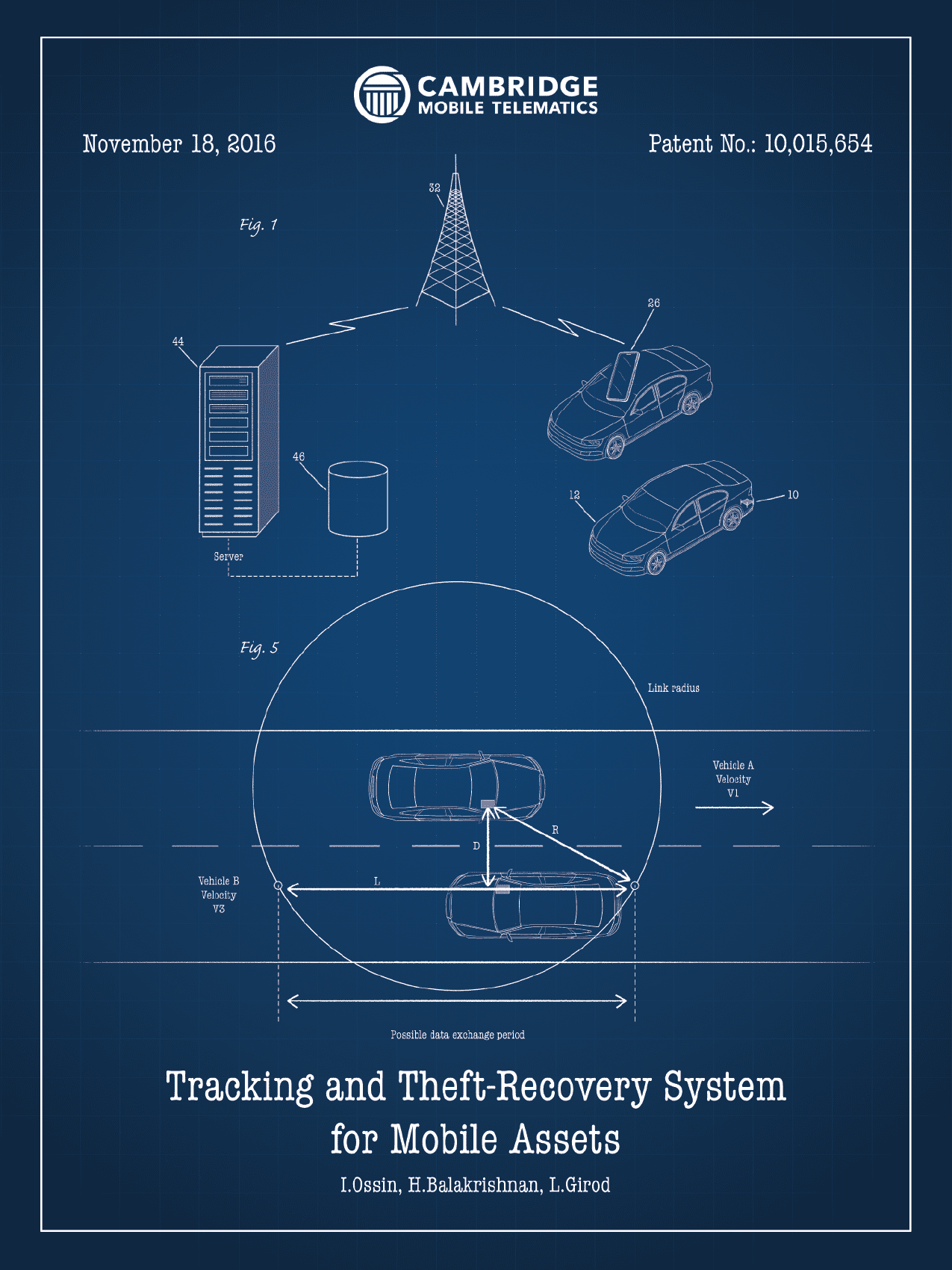
Tracking and Theft-Recovery System for Mobile Assets (Patent No.: US 10,015,654)
Cambridge Mobile Telematics tracks and recovers objects using tracking devices attached to those objects. On receipt of a short range distress signal from a tracking device, a location is obtained from a mobile communications device. A signal is then transmitted to the server with identification of the tracking device, a time of receipt of the signal, and the location of the tracking device when the signal was received.
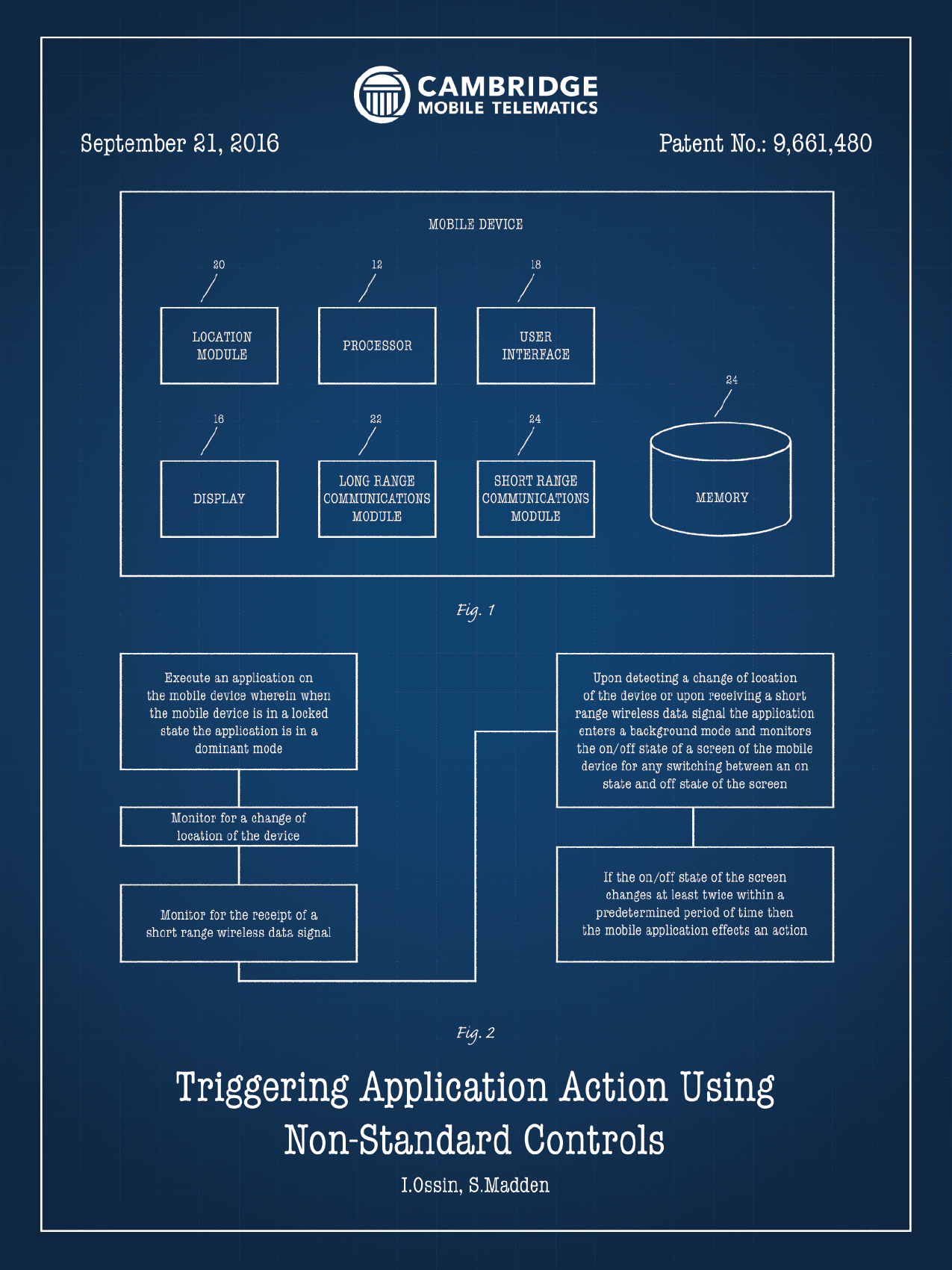
Triggering Application Action Using Non-Standard Controls (Patent No.: US 9,661,480)
Cambridge Mobile Telematics enables a user to use the lock button of an iOS operating system to effect an action when the mobile device is in the locked state. The operating system will communicate an action to the application that in response, will trigger an action, such as sending a panic signal.
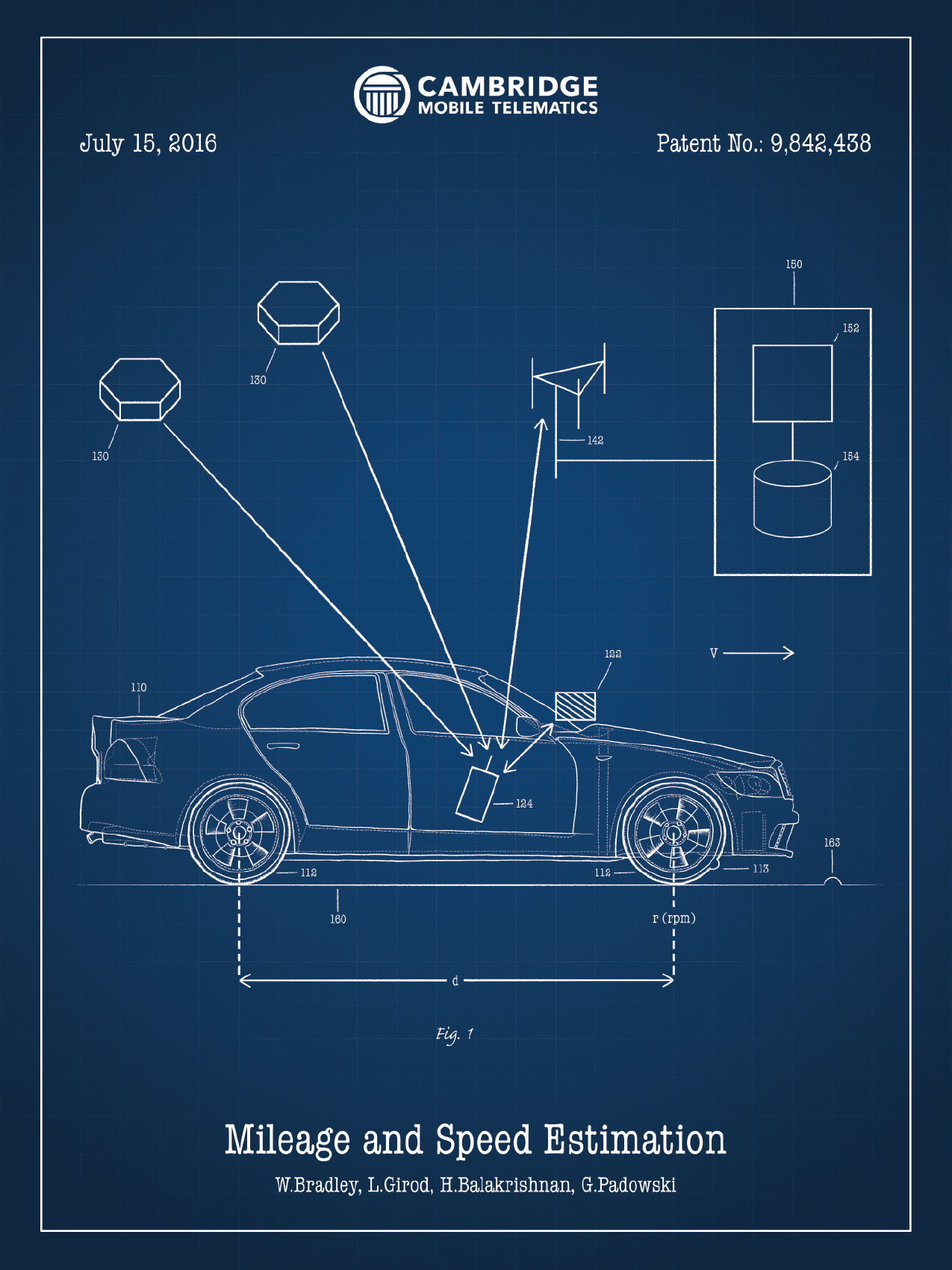
Mileage and Speed Estimation (Patent No.: US 9,842,438)
Cambridge Mobile Telematics determines vehicle usage with a sensor of a device affixed to the vehicle. The sensor provides a vibration signal associated with the vehicle, and that vibration signal is used to infer usage. Usage can include distance traveled, optionally associated with particular ranges of speed or road type.
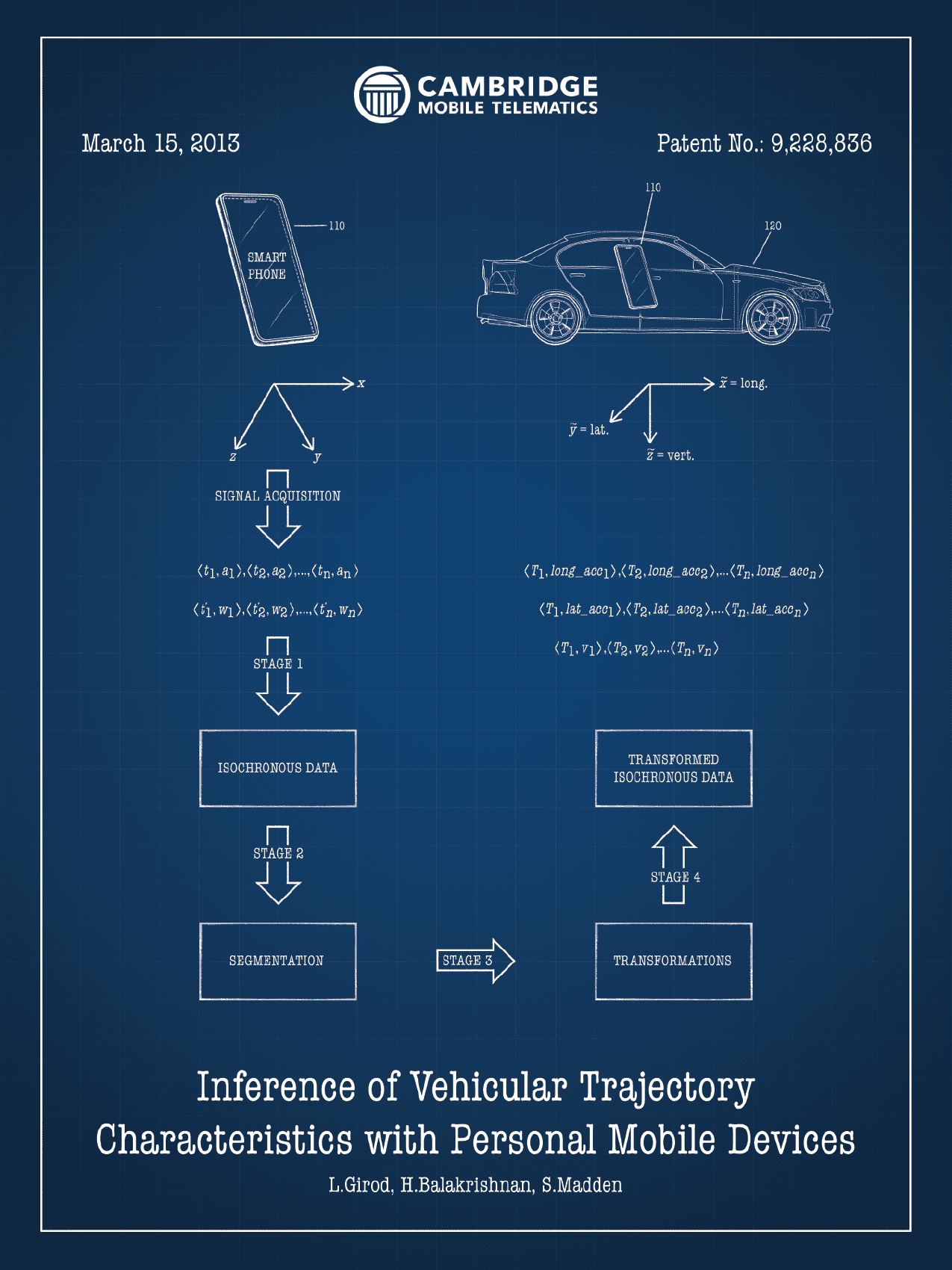
Inference of Vehicular Trajectory Characteristics with Personal Mobile Devices (Patent No.: US 9,228,836)
Cambridge Mobile Telematics accurately measures longitudinal and lateral acceleration using raw three-axis accelerometer data from a smartphone that may be oriented arbitrarily in a moving vehicle or carried by a moving user. Orienting the phone’s three-axis accelerometer to the moving car is applicable to a range of applications, including insurance telematics, driver behavior and risk assessment, and road surface quality assessment.
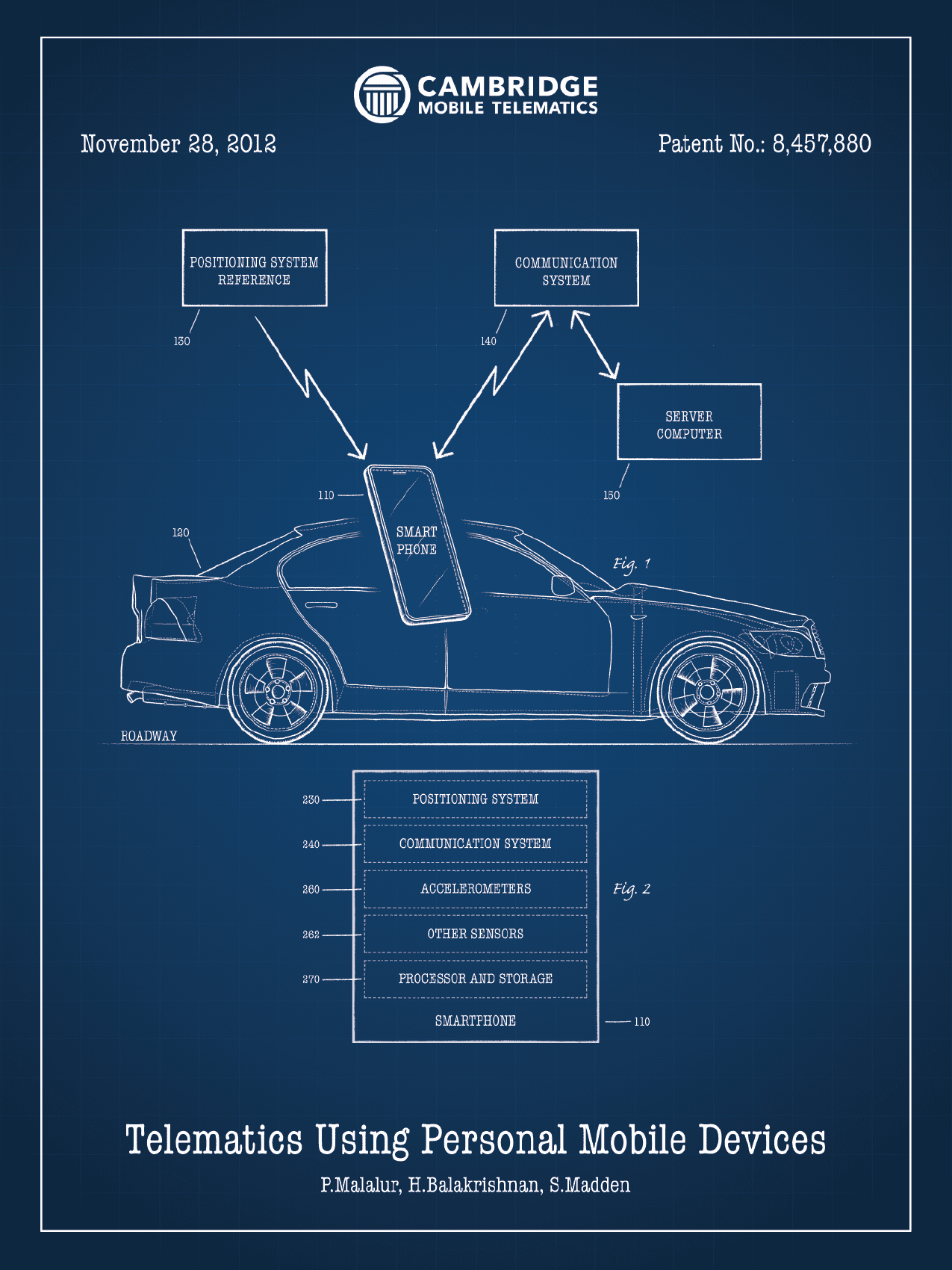
Telematics Using Personal Mobile Devices (Patent No.: US 8,457,880)
Cambridge Mobile Telematics provides vehicle trajectories and mileage inferences from smartphone location data in a battery-efficient manner. This is done through the method of map matching – processing inaccurate, noisy, and error-prone from position sensors in the smartphone into accurate trajectories of how vehicles or users move in the physical world.